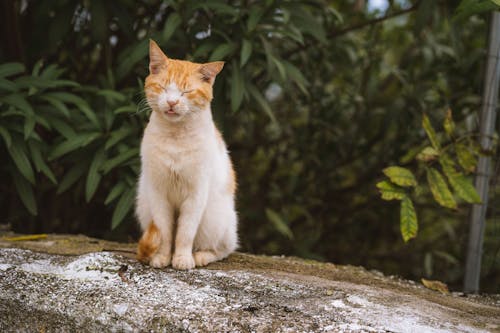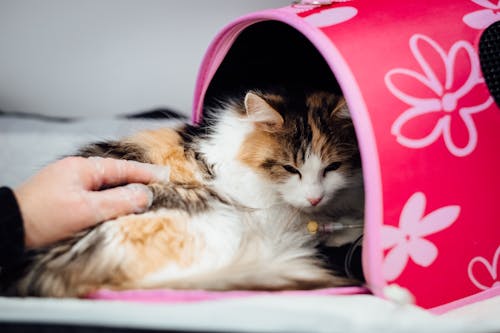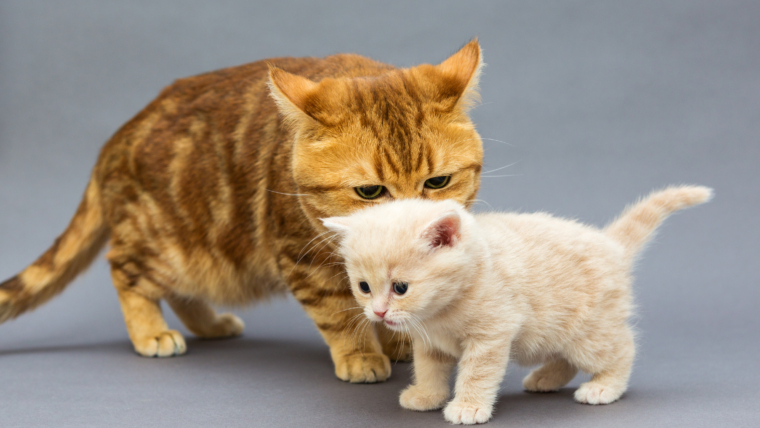
Cats are eternally on great adventures, and a feat faced by many of our little wanderers is coming across cat flu.
What is cat flu?
Think of cat flu as the sniffles of the feline world- it is a common illness that affects the upper respiratory tract, and can be caused by infectious agents like viruses and bacteria.
What causes cat flu?
As above mentioned, cat flu can be caused by the spread of viruses and bacteria. There are 2 main types of viruses that can be identified as the cause:
- Feline Herpesvirus (FHV)
- Feline Calicivirus (FCV)
As for bacteria, cat flu can be caused by:
- Chlamydophila Felis (also known as Chlamydia)
- Bordetella Bronchiseptica
How does it spread?
Cat flu spreads through body fluids such as nasal discharges, eye discharges and saliva- which means your cat could have a higher chance of coming in contact with it if it hangs around other infected cats.
However, not all cats who are carriers of the virus will show clinical signs. Some felines may be perfectly healthy and not suffer from the symptoms of cat flu, but still be able to pass it on from one cat to another.
In fact, cat flu particles survive up to a week in the environment- meaning that your cat doesn’t necessarily even need to meet with another to come in contact with it. Cat flu can even spread through situations as simple as sharing bowls, toys, or coming into contact with clothing that contains infectious bacteria or virus.
Is cat flu fatal?

Cat flu is not fatal in all cases. If detected early, it can be treated and recovered from. However, in the case of older cats, kittensor felines with underlying conditions- cat flu does have the potential to be fatal. Cat flu may also cause loss of pregnancy for felines.
In some severe cases, cat flu may even lead to pneumonia.
Thus, if your cat or kitten is displaying any of the symptoms listed below, then you should definitely head to your nearest vet.
What are the symptoms of cat flu?
- Runny nose
- Sneezing
- Excessive discharge from eyes/ redness of eyes
- Excessive drooling
- Fever
- Seemingly sore throat or loss of voice
- Coughing
- Visible discomfort due to pain in muscles and joints/ lethargy
- Ulcers on mouth or tongue
- Partially closed eyes/ eye ulcers/ conjunctivitis
- Loss of appetite
How is cat flu treated?
Cat flu and viral infections are often not treatable. The cat’s immune system is designed in such a way that it can hoard off viral infections biologically. However, secondary infections can be treated with antibiotics at your closest veterinary clinic. Treatments may vary depending on which virus or form of bacteria your feline has come in contact with.
-
Treatment for Feline Herpesvirus (FHV)
Similar to humans, cats that come in contact with FHV are infected for life- with the first infection being the most severe. Flare ups thereafter may be caused by stress or other underlying illnesses. A veterinarian would go for an antibiotic course against possible secondary infections.As for the excessive eye and nose discharge, gently cleaning the areas with some clean cotton wool and water would do the trick. If your vet sees it fit, they might even prescribe nasal drops and eye drops. Steaming is also done in severe cases of nasal congestion.
-
Treatment for Feline Calicivirus (FCV)
FCV is also treated with antibiotics again possible secondary infections. In more severe cases where symptoms such as ulcers in the mouth area are detected, a drip and pain killers may be required.
Similar to before, gently cleaning your cats face with cotton wool and water would help in avoiding a build up of discharge. Also, nasal drops, eye drops, steaming as mentioned above.
Cats can be protected against some strains of FCV with vaccination. This does not mean that they won’t become infected, but instead, have much milder symptoms.
General treatment
When taking the symptoms around the mouth and nose into consideration, it is no surprise that your feline might experience a loss of appetite. This may also lead to dehydration- something you should be mindful of if you are dealing with kittens.
Thus, it’s important to make sure that your cat/kitten is eating and drinking water- you can do this by mixing a little bit of water into its food to ensure that it is a part of its intake. Your cat will need the nutrients during this time, so if its appetite does not appear to recover- seek veterinary help.
Can cat flu be prevented?

Thus, if you haven’t vaccinated your cat already- it’s probably best that you plan to do so. For more information on cat flu vaccines and boosters, contact your local veterinarian.
If you have other cats/kittens around, it would be best to separate them from your infected feline, as you could risk them catching the flu as well. The flu can even pass from an infected mother to her kittens, so if your feline’s a mum, make sure she’s kept in a separate area and switch to other alternatives for the babies. Check out our article on bottle feeding kittens and the steps to looking after one to learn more about what to do while their mum’s away.
Keep in mind that your cats do not need to come in contact with each other in order for them to be infected with the flu. This means that you should also avoid sharing the same feeding and water bowls, toys, litter tray etc.
Overall, cat flu is quite a common illness among felines, and can be treated and recovered from most of the time. It may take a few trips up and down to the vet and a few days of struggling to give your cat antibiotics, but as long as you stay committed to treatment, your feline should be fine.
Do you have any more questions? Reach out! We’d be more than happy to help!


